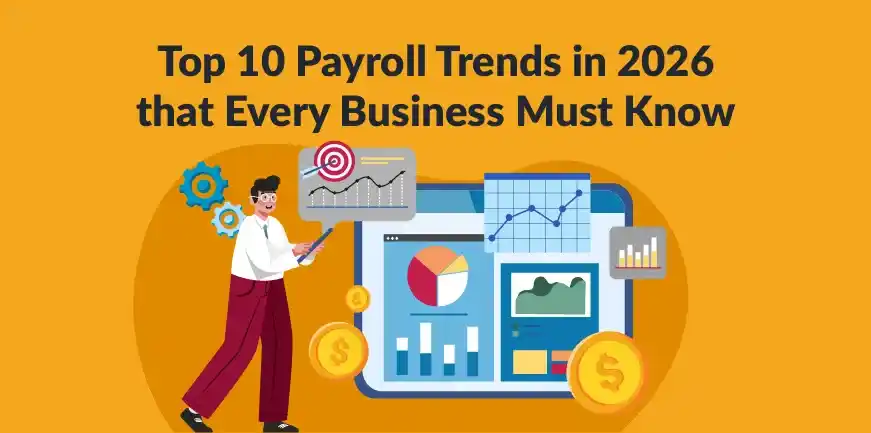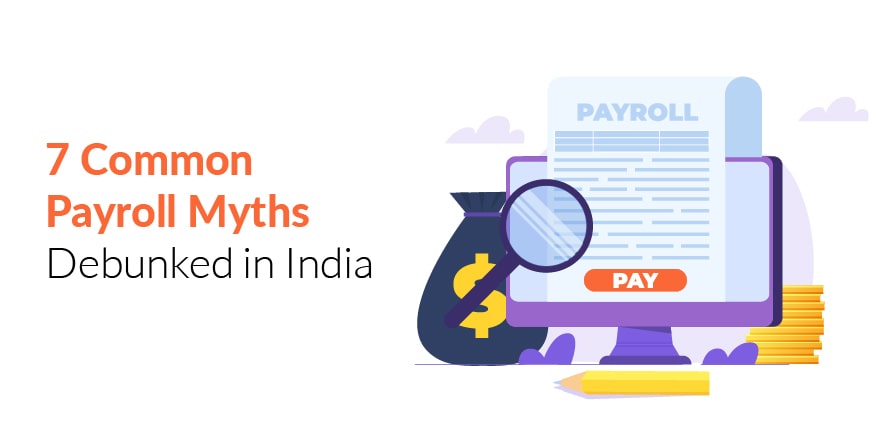
Japan Vs Other Countries: Why Japan Is the Best Career Destination for Indians?
05/08/2025
Staff Augmentation Vs Time and Material
06/08/2025- What Is Cloud-Based Payroll?
- What Is On-Premises Payroll?
- Cloud-Based Payroll Vs. On-Premises Payroll: Key Differences
- What are the Key Services and Benefits of Cloud-Based Payroll?
- Key Cloud Payroll Benefits
- What are the Key Services and Benefits of On-Premises Payroll?
- When to Choose Cloud-Based Payroll?
- When to Choose On-Premises Payroll?
- Verdict
- Key Takeaways
- Frequently Asked Questions
Are you in the quest of deploying a robust payroll management system but unable to decide whether it should be on-premises or cloud-based? Don’t worry, we are going to discuss Cloud-Based Payroll Vs. On-Premises Payroll in detail, which covers a 360-degree perspective. This in-depth analysis will resolve this conundrum and help you make an informed decision on which payroll management system is best for your business and employee needs. Let’s roll!
What Is Cloud-Based Payroll?
Before making a fair comparison between Cloud-Based Payroll Vs. On-Premises Payroll, let’s focus on each solution individually, starting with cloud-based payroll.
Cloud-based payroll is a multifaceted & continuously progressing universal payroll management solution that uses an in-built automation mechanism for employee salary & tax management regardless of whether permanent or contract employment, performs accurate tax calculations, & ensures compliance obligations are met via internet-operated software. This upgraded payroll management system offers zero-delay access to employees & managers from any corner of the world, security, & scalability for businesses.
The key elements that help cloud-based payroll software run seamlessly include:
- Employee Database: It stores a large amount of personal, job, & salary data that is accessible from anywhere & allows access only to authorised personnel.
- Payroll Processing Engine: It performs automated salary calculations, benefits administration, voluntary deductions, & tax withholdings for every payroll cycle.
- Compliance Management: It facilitates timely statutory filings & alignment with all applicable regulatory mandates set from time to time, allowing companies to always achieve 100% compliance.
- Time & Attendance Integration: It never skips a beat and synchronises employee working hours & leaves for accurate payroll and overtime calculations.
- Reporting & Analytics: It offers custom payroll reports, trends, & insights for better decision-making and audits.
Use Case
A mid-sized software company hires remote employees across India. By choosing a full automated cloud-based payroll system, the HR team were able to process net salaries, deduct taxes, & generate pay slips online without any fuss. Also, employees can monitor their payroll notifications & details from any corner in the world via self-service portals installed on their phones. This ensures timely, accurate payments & easy compliance with local laws, without necessitating an on-premises payroll team.
What Is On-Premises Payroll?
On-premises payroll may look old school, but not a pushover by still backed by a lot of companies that wish for data control. Let’s get more insights on this.
On-premises payroll is a conventional, yet useful payroll management system installed & managed on a company’s internal servers. It necessitates a premises payroll software setup, in-house HR & finance personnel, & certain manual inputs for salary processing, tax & voluntary deductions, and compliance tasks.
On-premises payroll features offer better control and ownership of data but often lack flexibility and demand continuous maintenance & updates. Unlike cloud-based payroll, on-premises payroll systems are not equipped with an accessible from anywhere feature unless custom integrations are developed. These limitations make them more rigid in terms of scalability & accessibility.
The key elements that help the on-premises payroll function efficiently include:
- Local Server Infrastructure: Payroll software is hosted on internal servers managed and maintained by the organisation’s IT team.
- Manual Processing Tools: Involves in-house handling of pay calculations, deductions, reimbursements, and tax entries using installed systems.
- IT & Data Security Control: Complete control over data storage, access rights, and security protocols managed by internal resources.
- Custom Configuration & Upgrades: Software upgrade, patch updates & customisations that necessitate internal or third-party IT intervention for seamless deployment.
- Limited Remote Access: Payroll data is accessed only within the corporate network or through secured VPN setups.
Use Case:
A manufacturing company must manage complex payroll needs in-house and deploy an on-premises payroll system, as it offers full management control.
With premises payroll software, data control & smart customisation, employee data that contains personal and business-related information stays off limits for cyber perpetrators, disarming them from unauthorised access. Fully controllable offline processing facilitates payroll with minimal to zero disruption, while the absence of ongoing subscription fees drastically reduces overhead costs.
Cloud-Based Payroll Vs. On-Premises Payroll: Key Differences
We were able to understand cloud-based and on-premises payroll separately from the previous discussion. Let’s don our comparison hat and eek out the stark differences between Cloud-Based Payroll Vs. On-Premises Payroll, so that we can make informed decisions on which payroll management system is best suited for our business needs.
| Aspect | Cloud-Based Payroll | On-Premises Payroll |
| Deployment | Hosted online via a third-party provider; no internal server setup needed. | Installed on internal company servers; needs IT infrastructure setup. |
| Accessibility | Reachable from every nuke & corner with a stable internet connection; apt for remote & hybrid teams. | Limited to the internal network; external access necessitates VPN setup. |
| Maintenance | Service provider manages updates, bug fixes, & compliance patches. | The company is responsible for software maintenance & regulatory updates. |
| Cost Structure | Subscription-based pricing model with minimal upfront costs. | High initial funding is needed for setup, licensing, & infrastructure. |
| Scalability | Easily scales as your workforce grows across locations or countries. | Scaling requires hardware upgrades and additional licenses. |
| Security | Advanced cloud encryption and vendor-managed data backups. | Absolute control over security, but higher internal risks & responsibilities. |
| Integration | Seamless integration with HR, Logistics, & time-tracking systems. | Custom integrations are complex and require internal technical support. |
| Compliance Management | Real-time updates for tax laws and labour regulations are automated. | Internal teams require manual compliance monitoring and updates. |
| Reporting | Offers real-time dashboards, analytics, and customizable reports. | Limited or manual reporting unless custom-built. |
| Implementation Time | Quick to deploy and set up within days or weeks. | Longer setup cycles involving software, hardware, & rigorous team training. |
What are the Key Services and Benefits of Cloud-Based Payroll?
Here are the key services & benefits offered by a Cloud-based payroll system.
Key Cloud-Based Payroll Services
1. Automated Salary Processing
Cloud-based payroll processing system manages gross-to-net calculations, tax deductions, & payslip generation for all employee categories.
2. Compliance & Statutory Filing
Cloud-based system ensures timely PF, ESI, TDS, & labour law filings as per government regulations.
3. Employee Self-Service Portals
Cloud-payroll solutions grant the ability for the workforce to access & download payslips, tax forms, & update personal information in minutes.
4. Time & Attendance Integration
Cloud-based payroll system synchronises with biometric or attendance systems for accurate payroll and overtime management.
5. Multi-Location Payroll Management
Cloud-based systems support payroll for employees across regions or countries with unified compliance handling.
Key Cloud Payroll Benefits
1. Remote Accessibility
Employers, managers & employees can access cloud-driven payroll systems securely from any corner across the globe using their credentials, making cloud payroll a perfect foil for remote & hybrid teams.
2. Cost Efficiency
Cloud-payroll management system reduces infrastructure, maintenance, and manual processing costs with subscription-based pricing.
3. Real-Time Compliance
Cloud-based payroll solutions facilitate instant software updates and ensure alignment with changing tax and labour laws.
4. Enhanced Data Security
Cloud payroll has built-in multilayered encryption & automated backups to safeguard sensitive payroll information.
5. Scalability & Flexibility
Cloud-driven payroll system easily scales to complement business growth, new locations, or workforce expansion.
What are the Key Services and Benefits of On-Premises Payroll?
Here are the key services & benefits offered by an On-Premises payroll system.
Key On-Premises Payroll Services
1. In-house Salary Processing
On-premises payroll is equipped with in-house software for salary computation, deductions, & the generation of payslips.
2. In-House Statutory Compliance
HR or admin teams use on-premises payroll features to manage PF, ESI, and TDS filings internally, utilising installed regulatory compliance modules.
3. Employee Access Portals
On-premises payroll allows access to payroll details only within the company’s secure local network or via internal systems.
4. Time & Attendance Linking
The on-premises payroll solution connects with internal attendance software or biometric devices for payroll calculations and overtime tracking.
5. Localised Payroll Management
Payroll is handled for a single or limited number of office locations, with manual updates for regional variations through an on-premises payroll system.
Key On-Premises Payroll Benefits
1. Greater Control & Customisation
Through an on-premises payroll solution, companies can fully control payroll software configuration, add customised security protocols, data storage, & processing rules to suit internal policies.
2. Data Ownership & Privacy
Sensitive employee payroll data remains within the organisation when we use an on-premises payroll system, reducing third-party exposure risks.
3. Offline Accessibility
Payroll can function independently of the internet, providing continuity during connectivity issues or outages.
4. One-Time Investment Model
Companies typically just make a one-time investment for an on-premises payroll management solution, reducing recurring costs over time for large enterprises.
5. Custom Reporting Capabilities
On-premises payroll solutions often bring about highly tailored payroll reporting that caters to unique company requirements.
When to Choose Cloud-Based Payroll?
Here are the 5 key reasons to deploy a cloud-based payroll management system:
1. Remote Workforce Management
Cloud payroll solutions are best suited for companies with distributed or remote teams needing easy, universal access to payroll data and services.
2. Scalable Payroll Operations
Cloud payroll is perfect for growing businesses that need a payroll solution capable of expanding with workforce and geographic footprint.
3. Real-Time Statutory Compliance
Cloud payroll benefits include real-time process modifications that align with evolving tax and labour laws through automatic compliance updates and notifications.
4. Cost-Effective Infrastructure
Cloud payroll services can help companies get rid of deploying high-priced hardware, maintenance, & in-house IT, offering subscription-based, budget-friendly payroll processing.
5. Enhanced Data Security & Backup
Cloud-based payroll system offers encrypted, cloud-based data storage with automatic backups and disaster recovery for high payroll information security.
When to Choose On-Premises Payroll?
1. Full Data Control
On-premises payroll features are ideal for businesses wanting complete control over payroll data, security protocols, and internal server management.
2. Customised Payroll Workflows
On-premises payroll management solutions are suited for organisations with complex or highly specific payroll structures requiring deep software customisation and process control.
3. Offline Data Access
On-premises payroll is beneficial for companies operating in areas with limited or unreliable internet connectivity, ensuring uninterrupted payroll processing.
4. In-House Compliance Handling
An on-premises payroll system enables internal HR or finance teams to manage statutory filings and audits without relying on third-party systems.
5. Long-Term Investment Strategy
On-premises payroll is best for large enterprises that prefer capital investment in software and infrastructure over recurring cloud subscription costs.
Verdict
Now that we have fully uncovered the key and subtle differences between Cloud-Based Payroll Vs. On-Premises Payroll, it’s time to choose which is best for you!
Looking at this objectively, we can infer that both cloud-based and on-premises payroll management offer unique benefits when used in the right scenarios. Cloud-based is ideal where remote work is more prevalent and instant access from anywhere is needed, whereas on-premises payroll offers more control and data security, ideal for companies that don’t like to share data on the cloud for safety reasons.
Hope this detailed analysis will guide companies to make the right choice of payroll system best to serve their business goals!
Key Takeaways
- Cloud payroll enables remote access and real-time compliance updates.
- On-premises payroll offers full control and offline accessibility.
- Cloud solutions scale with business growth across locations.
- On-premises systems need a high upfront investment and maintenance.
- Choose a payroll system based on control needs, cost, and workforce structure.
Frequently Asked Questions
1. What is the main difference between Cloud-Based Payroll Vs. On-Premises Payroll?
Cloud-based payroll is internet-based and scalable, whereas on-premises payroll is hosted locally with greater control but higher maintenance.
2. Is cloud-based payroll secure?
Yes, cloud technology for payroll uses encryption, multi-factor authentication, and secure backups to protect sensitive employee and salary data.
3. What are the benefits of switching to cloud-based payroll?
Cloud-based payroll system offers automation, compliance accuracy, remote access, real-time updates, reduced costs, and improved employee self-service features.
4. How does cloud payroll handle data privacy?
Cloud payroll providers follow global data regulations, with encryption, access controls, and compliance certifications like ISO and GDPR.
5. Can on-premises systems integrate with modern HR or accounting tools?
Yes, but integration is more complex in premises payroll software and often requires custom APIs or vendor support for seamless data exchange.
6. What are the downsides of using cloud-based payroll?
Cloud-based payroll processing requires stable internet, recurring subscription fees, limited customisation, and reliance on third-party vendors for data hosting.
7. Which payroll model is better for small businesses?
Cloud payroll suits small businesses with limited IT resources due to lower costs, scalability, and minimal infrastructure needs.
8. Does cloud payroll require an internet connection always?
Yes, real-time payroll processing, updates, and employee access require a stable internet connection to function effectively.
9. What support do cloud payroll vendors provide after implementation?
Top payroll service providers like ALP Consulting offer ongoing technical support, software updates, training, compliance alerts, and dedicated account management services.
Contact Us For Business Enquiry

Yugandhara V. M
Yugandhara V. M serves as the Assistant Vice President – HRO at Alp Consulting Ltd., bringing over 14 years of rich experience in Human Resource Outsourcing, payroll management, and statutory compliance. He specializes in driving process excellence across HR operations, ensuring seamless service delivery and compliance with labor laws. Yugandhara’s expertise lies in managing large-scale client engagements, optimizing HR processes, and implementing efficient workforce management systems that enhance organizational performance. He also leads comprehensive payroll services, ensuring accuracy, timeliness, and compliance for diverse client portfolios.




